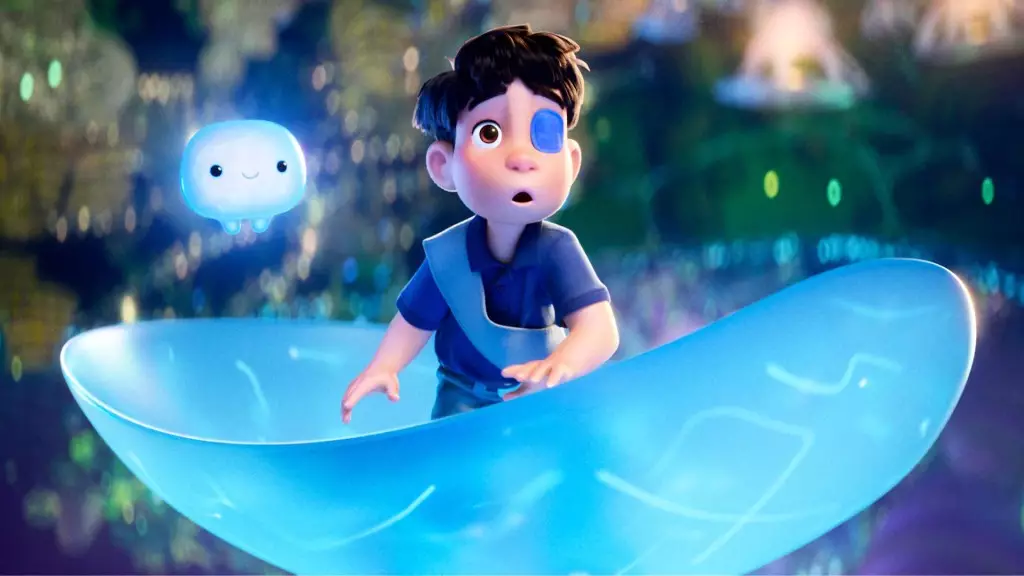Elio, the latest release from Pixar, confronted a harsh reality at the box office, achieving the lowest opening weekend of any animated feature from the studio—just $21 million. While many would dismiss this as one unfortunate misstep, the disappointment unveils a much more significant malaise within the animation sector. Critics might argue that box office performance is an unreliable metric; however, when Disney-Pixar is concerned, the implications of this opening weekend cannot be ignored. Analyst Doug Creutz from TD Cowan has pointed out that the chasm between original animated films and sequels or adaptations has exponentially widened post-COVID. This trend raises a critical question: Has the audience definitively turned its back on originality?
A Rotten State of Affairs
With an 84% score on Rotten Tomatoes, suggesting a generally favorable reception from critics, one would think Elio would perform better. The apparent contradiction reveals the often fickle nature of film-going audiences, who increasingly gravitate toward sequels and well-trodden narratives. The sentiment echoes across various entertainment sectors; originality is being shunned, while derivative properties thrive. As Creutz succinctly states, the consequences for movie studios could be dire. How often can investors flex and pivot around failed originals without jeopardizing the very essence of animation themselves? It’s disheartening to witness a once-revered institution like Disney watching its innovative spirit fade into a sea of recycled stories.
The Implications for Future Productions
The ramifications of this sobering trend are enormous. If studios like Disney conclude that original properties aren’t worth the investment, we may face a future dominated solely by sequels, prequels, and reboots. The only narrative we might see advancing will be those we already know. If creative risks are abandoned, animation may devolve into a repetitive cycle of familiar characters and stories, stifling creativity at a time when it is desperately needed. With billions tied to intellectual properties to sustain theme parks and associated merchandise, Disney’s relentless machinery might lose its innovative edge as it seeks immediate returns over long-term storytelling.
Stock Market Reflections
Investors are reacting with understandable caution; Disney’s shares dwindled by 2% following Elio’s disappointing performance, though they later regained a fraction of that loss. This behavior illustrates not just a temporary market hiccup but an underlying anxiety about the company’s overall health. The frightful reality that such underwhelming individual performances can stifle broader market confidence should send a shiver down the spine of any stakeholder invested in the future of animated storytelling. Park revenues touch $34 billion annually, which dwarfs competitors, but without new, vibrant stories on the screen, can Disney sustain its supremacy?
The Current Landscape of Animation
Creutz’s insights indicate a stark reality: since 2022, average gross earnings for original animated titles from heavyweights like Disney and Universal sit at a meager $412 million, significantly lagging behind the $844 million average from sequels. This paints a grim picture for any aspiring animated originals. Even when stratifying releases, the dominance of long-established franchises raises a caution flag: what does it say about culture if only past stories can find success?
Moreover, some argue this trend damages resilience. Should studios only focus on nostalgic properties, the creative pool risks stagnation, rendering not just animated films obsolete but potentially damaging the culture as a whole. Are we willing to accelerate towards a future where creativity is nothing more than a footnote in textbooks?
The Path Ahead for Disney and Animation
As Disney re-evaluates its strategy, executives must tread carefully. The lesson learned from Elio is clear: audiences are fatigued by innovative storytelling, and yet, the need for originality hasn’t diminished. As seen with hits like Inside Out 2 and Moana 2, there is evidence that deep emotional connections with original characters can transcend the grave reality of dated narratives. The risk of alienating audiences with overly familiar plots has reached a tipping point. While nostalgia plays a crucial role, it should not overshadow the importance of fresh narratives that can spark joy, curiosity, and inspiration in audiences of all ages.
While the future of animation hangs precariously, a concerted effort toward embracing new stories could be the remedy for a flagging industry. Disney must balance the ledger between profitability and creativity to remain a beacon of hope in contemporary storytelling.

